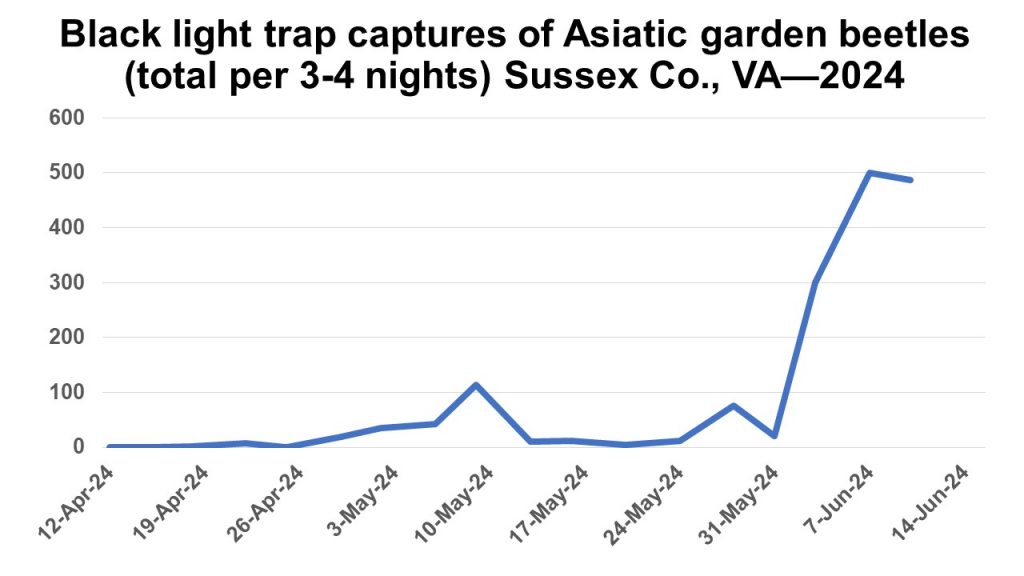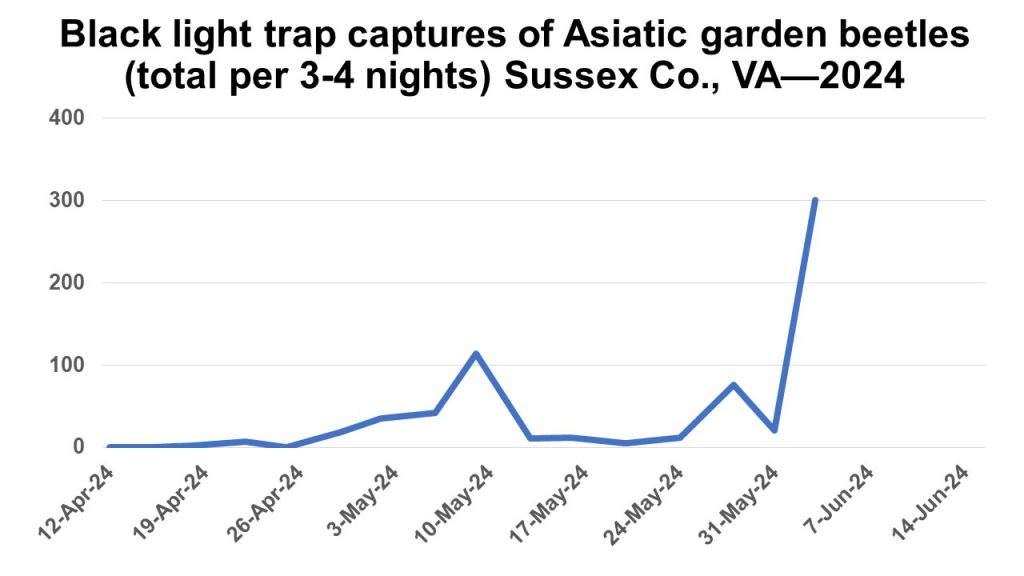Corn earworm (=bollworm) moth captures in local black light traps increased this week. The average number per night was 12 in Greensville County, 14 in Prince George/Disputanta, and 70 in Suffolk. Here is the Table. Scouting soybean in these locations indicated that larval numbers are low. Here is the customizable Corn Earworm Larval Threshold Calculator for Soybean. Thanks to Sara Rutherford, Scott Reiter, and the Tidewater AREC entomology crew for their reports.
Stink bugs tend to increase in soybean this time of year. This week in Greensville County we were finding a mixture of brown marmorated, green, and brown stink bugs. The threshold in soybean for grain is 5 stink bugs per 15 sweeps (all stink bug species combined) until the leaves begin to senesce and fall–at which point the threshold numbers are doubled to 10.
Insect pest pressure and beneficials will vary by field. Please be sure to scout your fields and check the Virginia Cooperative Extension thresholds.


